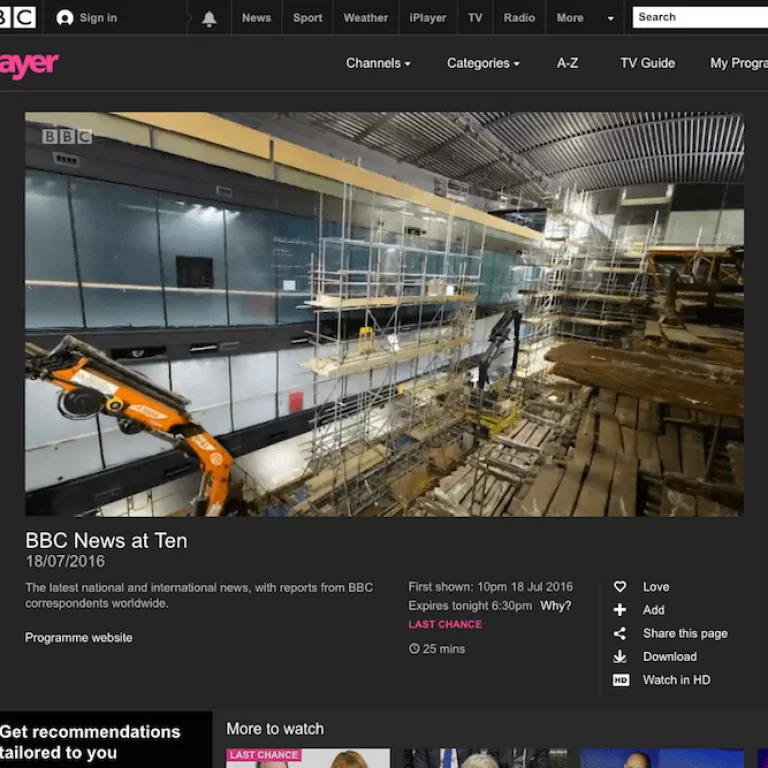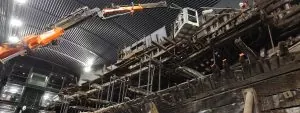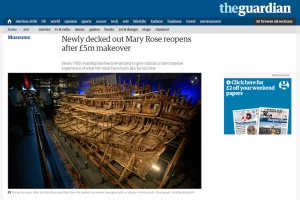
News ‘Broadcast-ready’ time-lapse
The widespread use of Ultra HD (as standard) by many professional providers means that images and edited time-lapse sequences can be seamlessly integrated with broadcast television.
Time-lapse is made viable with television, as well as other visual mediums, as it offers an interesting and unique way of representing long-term or short-term narratives.
‘Broadcast-ready’ time-lapse, then, refers to a combination of quality and adaptability that can appeal to television audiences that not only matches, but enhances their viewing experience.
Visuals fit for any genre
Time-lapse is beginning to flourish in isolation or along with other technical elements in film and television, making this photographic method a significant part of professional visual production.
Showing the accumulative effects of progress made over a particular time period, a time-lapse sequence begins to show change almost immediately over the course of a few seconds.
This is highly beneficial in the context of television, as narratives have to be edited to fit precisely within the regimented time frames of wider broadcast schedules.
Additionally, peak periods of construction activity on site can be rendered in short, snappy sequences using the most appealing perspectives.
Progress made evolves on screen in a manner of seconds, visibly shaking up the narrative style of the documentary television genre.
Adaptable to any broadcast format
This rapid pace of time-lapse is perfect for the ‘bite-size’ temperament of audiences in the twenty-first century; always on the go and in need of digesting information that is made available quickly and efficiently.
These visuals can function as part of short pre-recorded subject-specific segments on shows of various formats.
Magazine/ chat show programmes such as BBC’s The One Show, cover a host of topical stories and guests as part of a regular weekday broadcast schedule.
Time-lapse footage of construction has been featured as part of this show for a segment about NHS Northumbria’s Specialist Emergency Care Hospital.
Likewise, for BBC children’s title Blue Peter, time-lapse clips of the Alton Towers rollercoaster ‘The Smiler’ under construction were featured several times as part of a broadcast back in May 2013.
As both examples are evidence of, whether arranged into smaller progress edits, or part of a longer remarkable record of construction, time-lapse footage can be adapted professionally to the detailed specifications of the BBC.
Different shows will come with their own individual format and professional time-lapse providers are able to cater to these very specific requirements in terms of post-production editing.
As with the Alton Towers project, time-lapse can also be ‘social media ready’, which is more content that broadcasters may utilise to extend their reach to other audiences.
Plus, viewing progression in motion as opposed to merely consulting still images can give a more detailed, comprehensive impression of the project in question.
News worthy content
As well as stylistically speaking, the practicalities of time-lapse projects like these involve working in exterior environments. Operating a camera system outdoors to achieve sustained long-term capture requires careful monitoring, either remotely or on site.
The ability to micro-manage camera settings enabled by online networks means that the equipment always retrieves the best possible image, regardless of the changes to weather, climate, or the project itself.
Internal environments can be equally as challenging, especially when trying to provide ‘broadcast-ready’ quality in the most delicate of environments.
The Mary Rose Museum at Portsmouth Historic Dockyard commissioned a time-lapse camera to capture intensive conservation works undertaken on Henry VIII’s flagship.

A specialist rig was utilised to carefully mount the camera system to the Mary Rose so as not to cause any damage to the 500-year-old vessel.
Time-lapsing the final conservation efforts before her public reveal and indefinite resting place on display in the Weston Ship Hall of the museum, was an important part of the ship’s historical legacy.
The Mary Rose has been carefully monitored for decades but the intensive works performed last year brought such monitoring to a close.
Time-lapse was able to capture these significant developments and therefore preserve this phase of the ship’s prestigious journey.

It is not surprising that these developments were deemed newsworthy. The time-lapse footage that brought these works to life featured as part of a national BBC News broadcast, while the time-lapse camera is featured in articles illustrating this news for readers of The Guardian and the Daily Mail.
Long-term, uninterrupted footage, mixed with rapid interval ‘bursts’ of capture resulted in a vibrant and unique visual rendering to reflect the remarkable nature of such an iconic project.